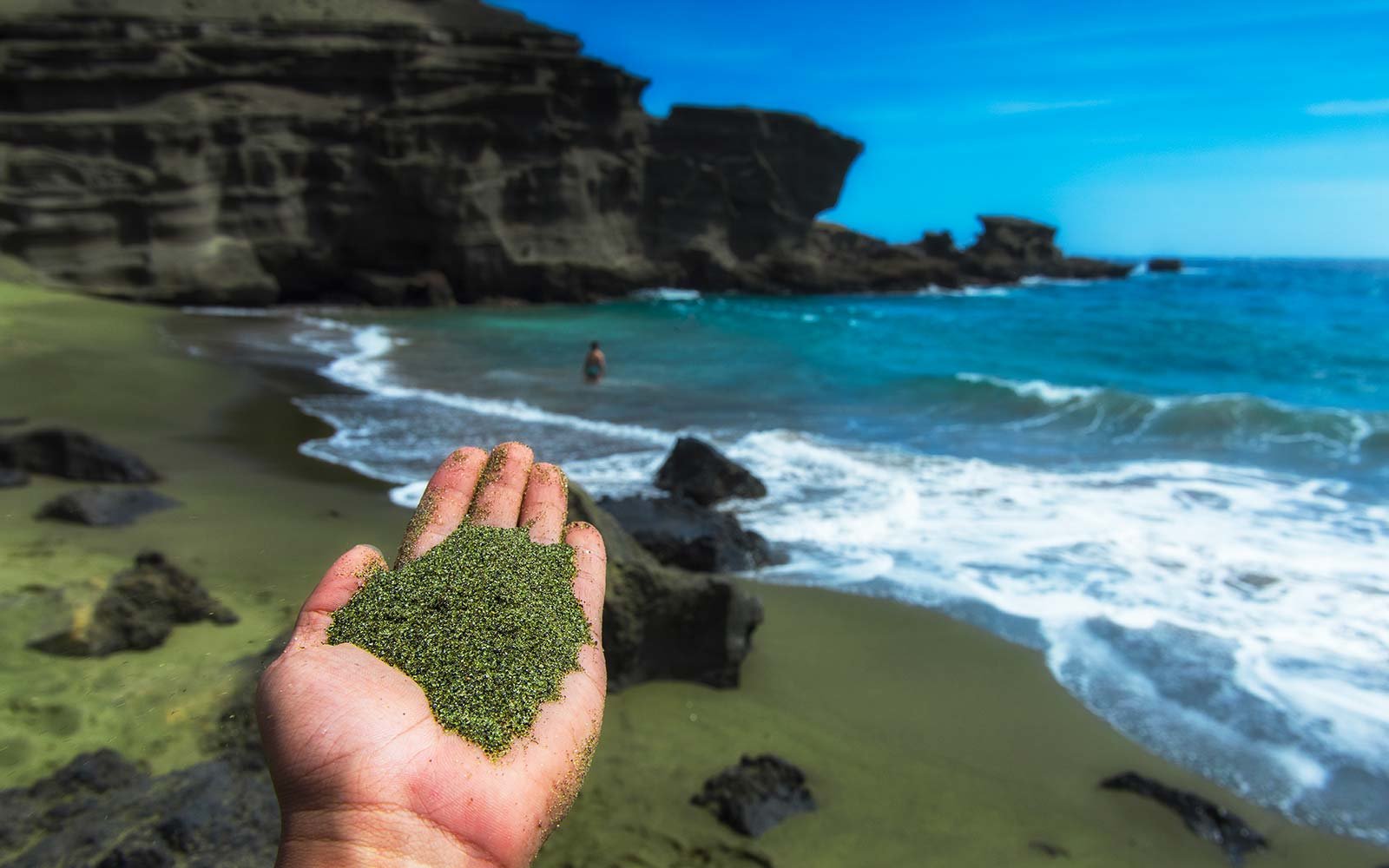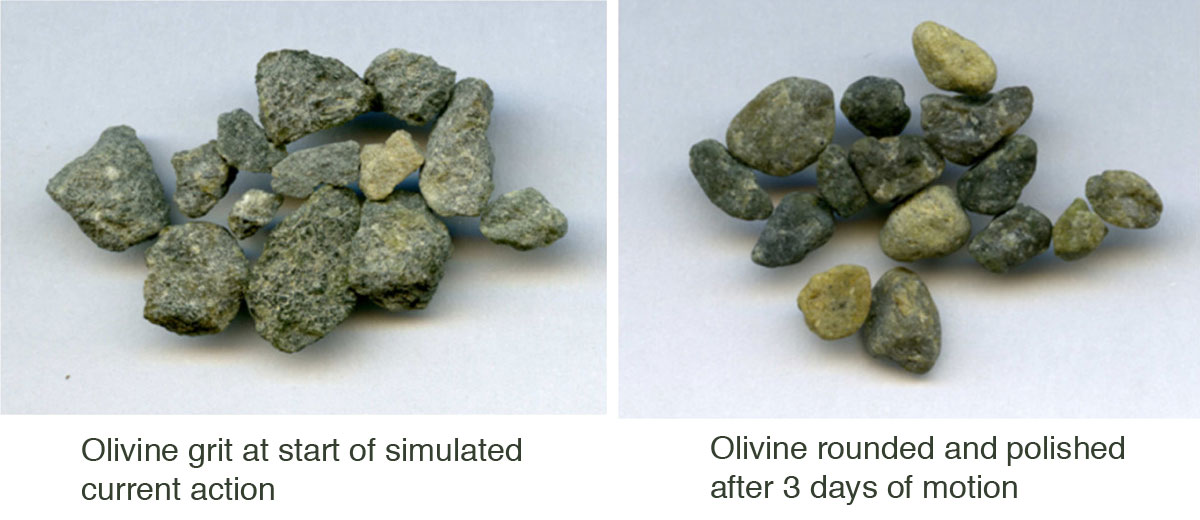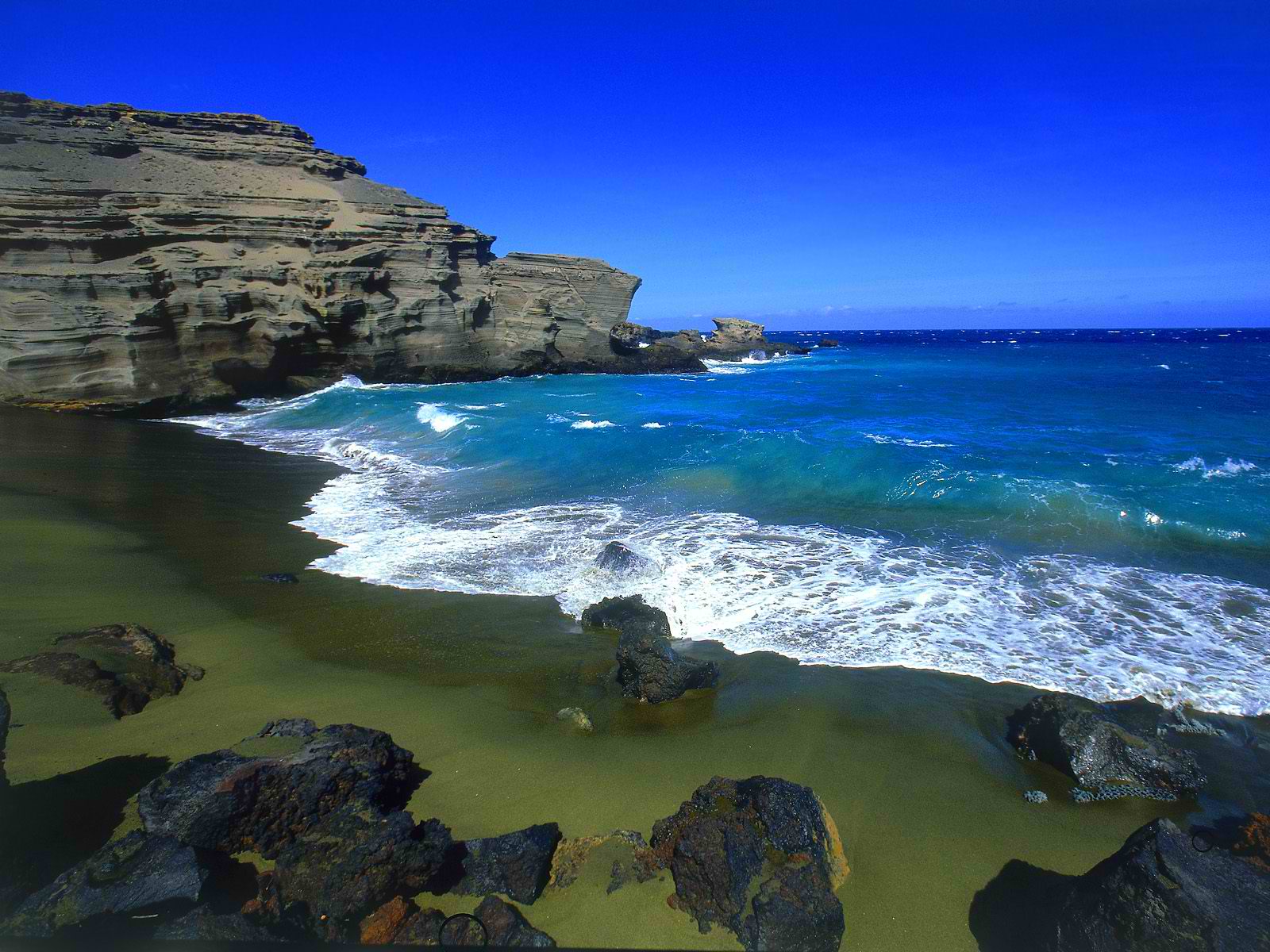
It is rare to come across a solution to lowering the amount of CO2 in the atmosphere that is simple, yet plausible, and which can be started right away with no new science. Not only is this process possible, it is actually already underway as you read this and has been underway since the formation of Earth.
The process is called weathering and it is the natural chemical breakdown of rock that occurs when it is exposed to atmospheric gases. In this case, we are looking specifically at the rock olivine when it comes in contact with ocean water and the CO2 dissolved in it. What results is a chemical reaction that pulls carbon from the CO2 in the ocean and binds it in a solution that eventually settles into rock on the sea floor. Not only does the olivine remove CO2 from the atmosphere, but the resulting solution is alkaline and has a deacidifying effect on the ocean.
Sound too good to be true? It’s not. The only real question is “why haven’t we started this sooner?” When you look at the facts, it becomes even more obvious that this solution is not only viable, but is one of the few tried and true methods we have to plausibly sequester carbon, as rock already sequesters 99.9% of world’s total carbon.
Carbon in the atmosphere makes up only .004% of the world’s total! As can be seen in the chart below, limestones contain 46.6% of the world’s carbon, dolomites contain 33.3% and sediments contain another 20% of the world’s carbon. Recoverable fossil fuels only make up a tiny sliver of carbon on earth, at just .005% of the world’s total.[1]Dunsmore, H.E. (1992) A geological perspective on global warming and the possibility of carbon dioxide removal as calcium carbonate mineral. Energy Conversion and Management/33, p.565-572

So when we look at the problem through this new lens, the solution becomes obvious. We need to take that extra carbon out of the atmosphere and put it back into its majority state: rock. The plan is to expose large amounts of the abundant and cheap rock, olivine, to the atmosphere and ocean. We know this works because there were times, such as the rising of the Tibet plateau and the Himalayas that exposed so much rock to weathering that it kicked off global ice ages (including the glaciation period we are in now).[2]Raymo, M.E & Ruddiman, W.F., (1992) Tectonic forcing of late Cenozoic climate Nature, 359, Issue 6391, 117-121 and [3]Saltzman, M.R. and Young, S.A (2005) Long-lived glaciation in the late Ordovician. Isotopic and sequence-stratigraphic evidence from western Laurentia. Geology, 33, 109-112.
The idea of accelerated weathering of olivine has been championed by the Dutch geologist R.D. Schuiling for over a decade. He has worked with a diverse group of scientists to run experiments and calculate the rate of weathering and volume of olivine needed to make a net impact on decreasing atmospheric CO2 levels. Everything has been calculated to minimize the CO2 output in acquiring the olivine and minimizing the CO2 output in distributing it. An impressive part of their process was to come up with the idea of utilizing the free energy of wave power on the world’s 2% most tidally active beaches to mill the rocks down and accelerate their weathering. In the picture below, olivine rocks (left) were tumbled for three days in an experiment to simulate the accelerated weathering they would experience on a beach, and the rocks came out significantly rounded and polished (right).

To offset all of humanity’s current CO2 for a year, we would need to release 7 km^3 of grains across the beaches of the world. It is not an impossible task, because countries could work together to offset their region’s CO2 emissions. For example, there is an area near the English channel, by the coasts of the UK, France, and Netherlands, called the Southern Bight, that has 35,000 km of adequate beaches that are accessible by road. If those countries worked together to spread a one-centimeter thick layer of a volume of 0.35 km^3 of olivine grains on those beaches, it would offset 5% of a year’s global CO2 emissions. This 5% of emissions exceeds the combined annual CO2 emissions of the UK, France, Netherlands, Belgium and Ireland, which together are responsible for about 4% of the world’s CO2 emissions. Our plan is to start with a single beach and go from there.
To our knowledge, there is not yet a man-made olivine beach, however, there are examples of natural olivine beaches created from volcanic action, such as such as Papakōlea beach in Hawaii pictured below (and at the top of the page). We are in the initial stages of creating a beach to put the science to the test and to hopefully inspire and catalyze the world to action. We do not have to be passive in reducing CO2 in the atmosphere and we do not have to convince every polluter and country in the world to stop putting CO2 out, frankly, we can’t afford to wait. We must take action to remove that CO2 now, and this project is a step in that direction.

Based on our evaluation of geoengineering technologies and concepts, we have come to the conclusion that creating an olivine beach and proving that this concept works is the most impactful thing Climitigaton can do, and so will focus exclusively on this project. We are in the early planning phases right now, building a team and working on logistics. We are looking to connect with interested parties to who want to work to help make this a reality. If you would like to join the project, please reach out to us 🙂
We are currently scouting a beach in the tropics because hot, humid weather increases the rate of weathering. Ideally there would also be a nearby supply of olivine to minimizing transportation costs (and emissions). Ideal sources of olivine are those with their emissions already sunk, such as mining operation waste or abandoned mines. We are also looking for scientists and organizations with experience monitoring beaches and ocean ecosystems. Due to the pressing issue of coral bleaching from ocean acidification, we might target a beach near an affected reef so we can put the deacidifying effects to the test locally.
These are some of the things we are thinking about and would love to have input from anyone who is an expert in these areas, has leads for us, or can help point us in the right direction. We hope for this to be a community project that helps turn the tide in the fight to stave off CO2 induced climate change.
If you want to learn more in-depth about the science behind this concept, please check out these papers or send us a note:
Rolling stones - fast weather of olivine Olivine against climate change and ocean acidification
References
| ↑1 | Dunsmore, H.E. (1992) A geological perspective on global warming and the possibility of carbon dioxide removal as calcium carbonate mineral. Energy Conversion and Management/33, p.565-572 |
|---|---|
| ↑2 | Raymo, M.E & Ruddiman, W.F., (1992) Tectonic forcing of late Cenozoic climate Nature, 359, Issue 6391, 117-121 |
| ↑3 | Saltzman, M.R. and Young, S.A (2005) Long-lived glaciation in the late Ordovician. Isotopic and sequence-stratigraphic evidence from western Laurentia. Geology, 33, 109-112. |